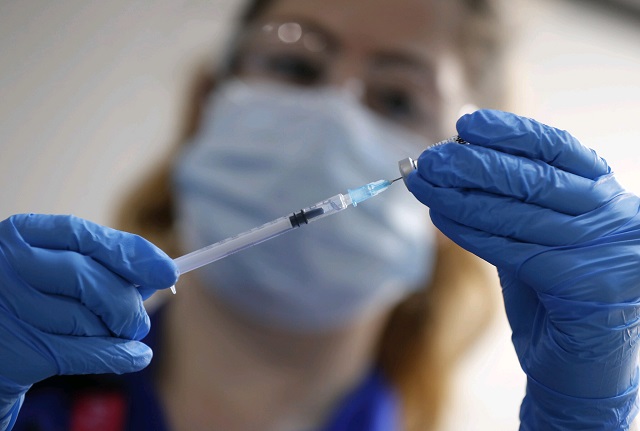
Rome, Italy | Xinhua | The recent spike in coronavirus infections across Europe has surprised healthcare analysts as it occurred earlier than expected, but they agree that the relatively low hospitalization rates offer hope that the newest wave of the pandemic can be kept under control.
The number of COVID-19 cases in the WHO (World Health Organization) European Region has passed the milestone of 60 million since the pandemic began, new data from WHO/Europe showed on Monday.
According to government data collected by odometer, last week alone, some 125,000 new COVID-19 cases were detected per day in Europe. Globally, COVID-19 infections topped 200 million on Tuesday.
Almost all the cases in Europe are now caused by the highly transmissible Delta variant of coronavirus, which was first detected in India. According to media reports, the average daily infection rate in France has increased by more than a third over the past three weeks, and in Spain the increase is 15 percent. Switzerland just registered its highest single-day jump in new COVID-19 cases since May. Iceland’s infection rate has hit record high, and the respective figures in Finland, Greece and Russia — are approaching 80 percent of the all-time peaks.
“It’s not a surprise that we’re seeing a new spike in infections,” Matteo Bassetti, director of the infectious diseases section at San Martino Hospital in Italy’s coastal city of Genoa, told Xinhua. “What is a surprise is that we are seeing these increases in July. We expected them in August or September when people return from vacation and schools reopen.”
Still, according to Martin McKee, professor of European public health at the London School of Hygiene and Tropical Medicine and research director at the European Observatory on Health Systems and Policies, Europe can afford to see how the newest wave of the pandemic develops before taking major steps.
McKee told Xinhua that while the pandemic has shown that it is better to act early than late, healthcare systems have generally proved that they can properly care for those infected, helped by increasing the number of vaccinated individuals. Evidence shows that vaccinated people can still be infected with the Delta variant, but at a far lower rate and with far less severe consequences than those who have not been vaccinated. Medical therapies for those hospitalized with coronavirus infection have also improved, McKee said.
“At this level, what we are seeing is a worrying trend but one that remains manageable,” he said.
According to the European Center for Disease Prevention and Control (ECDC), more than 70 percent of European Economic Area (EEA) residents aged 18 or older have received at least one vaccine dose and over 50 percent of the same group have been fully vaccinated.
Bassetti agreed with McKee’s level of concern. He said that while the early arrival of the Delta-related wave of infections in Europe is worrying, there are too many variables to sound the alarm bells.
“I am encouraged by the fact that on average only around 0.1 percent of the people in intensive care units have been vaccinated,” he said. “I would start to worry if that figure rose to 0.5 percent or 1.0 percent because that would mean the variant is learning to make vaccinated people very ill. Until that happens, we should look at the pandemic as a serious threat that is mostly under control.”
******
Xinhua
 The Independent Uganda: You get the Truth we Pay the Price
The Independent Uganda: You get the Truth we Pay the Price




